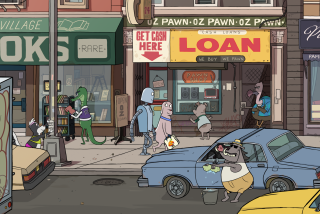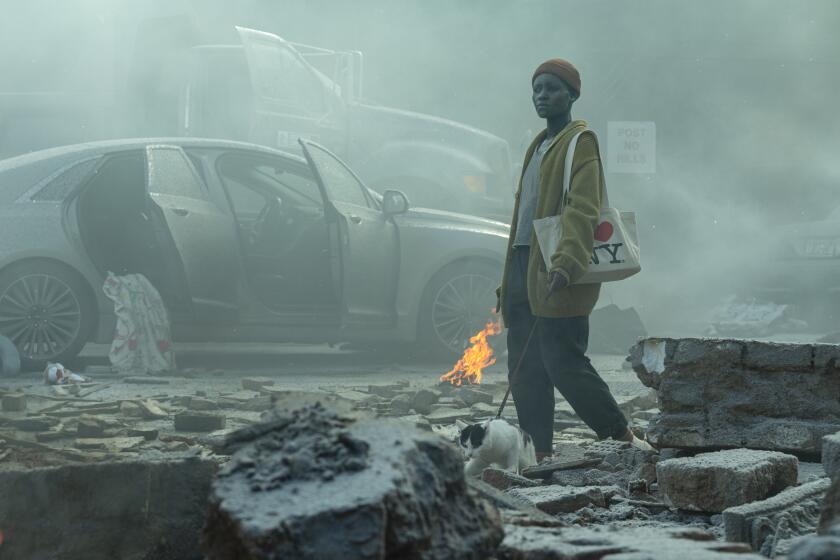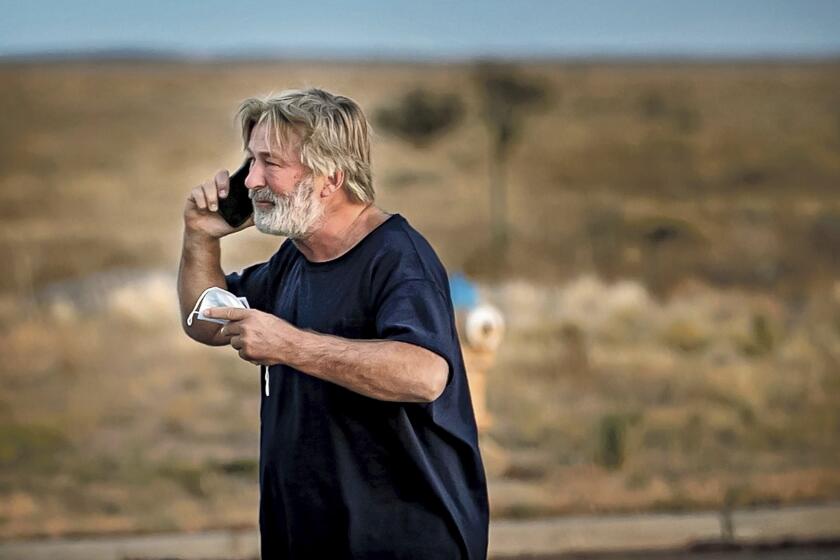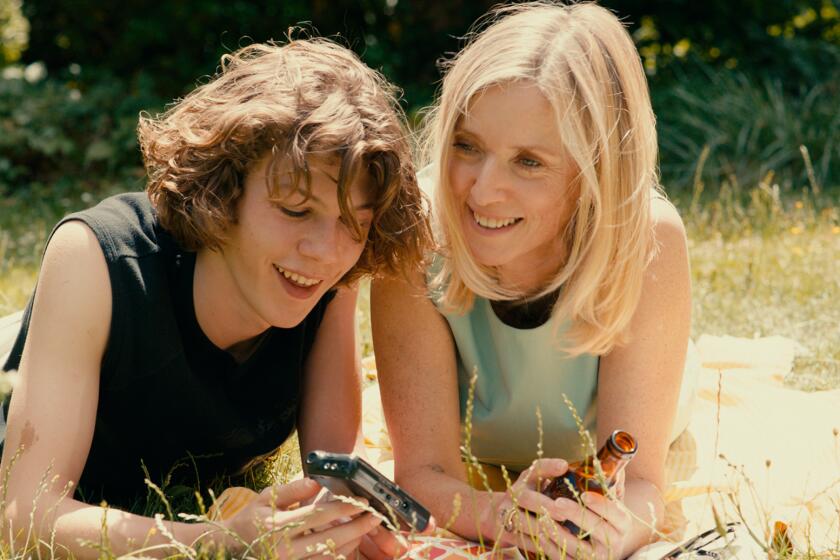Review: ‘Buñuel in the Labyrinth of the Turtles’; an animated deep dive into the artist’s mind
With a title like “Buñuel in the Labyrinth of the Turtles,” you’d be forgiven for thinking its director/co-writer Salvador Simó had inserted one of cinema’s great surrealists — Spanish-born auteur Luis Buñuel (“Un Chien Andalou,” “Belle de Jour”) — into a fantasy adventure with reptiles. What actually unfolds is a more layered affair, an animated graphic novel adaptation about the blurring of reality, manipulation and the subconscious when a young, broke and tormented Buñuel was driven to make the 27-minute ethnographic documentary “Las Hurdes: Tierra Sin Pan” (Land Without Bread), a depiction of extreme poverty he believed would change the world.
Not just a vivid reminder that simply rendered, hand-drawn animation still has expressive purchase in a CGI-dominant toon universe, Simó’s sensitive portrait of an often-insensitive genius also belongs to that category of biopic that prefers mining a key chapter to cramming in the whole life. It’s a still-underused approach for which the well-mounted “Buñuel,” which Simó adapted with Eligio R. Montero, makes an impressive case — that in the making of this controversial short lay the pivot when an inveterate nose-thumber became a more engaged, complicated artist.
In the early ’30s, with fascism on the rise, the notorious director (voiced by Jorge Usón) struggled in the wake of the outraged reaction to his and surrealist colleague Salvador Dalí’s second (ahem) eye-opener, the sacrilegious “L’Age d’Or”: No one would work with Buñuel, and professional jealousy wouldn’t allow him to work with Dalí again. Inspired by a researched book on Spain’s isolated, mountainous Las Hurdes region, Buñuel was spurred to awaken audiences to the plight of his home country’s most neglected souls, but also reaffirm his bona fides as an anti-authoritarian with a gift for shocking the complacent.
With sculptor friend and political compatriot Ramón Acín (Fernando Ramos) as an unlikely producer — Acín financed the project with unexpected lottery winnings — the pair decamped to a ruined monastery in the area and began filming. That’s when we learn the “Turtles” refer to an image that came to Buñuel upon encountering from a distance the flat-rock rooftops of the villages. The “Labyrinth”? Their narrow passageways, marked by ravaged, inbred and diseased inhabitants confoundingly disconnected from civilized prosperity mere hours away.
But the misery he found wasn’t enough, so Buñuel engineered scenes to achieve his desired aims, most cruelly involving animals. (This should serve as a warning for moviegoers.) A hive-transporting donkey stung to death by bees was a staged killing intended to sell the journey’s danger. A nearby city’s bizarre rooster-beheading ritual becomes an arranged close-up. And when goats tumble from mountainsides, it’s orchestrated with off-camera gunshots which can be witnessed at the edge of the frame in Buñuel’s documentary, snippets from which Simó cuts to throughout, almost as a way of presenting evidence alongside his confidently dramatized scenes.
The fakery — which has muddied the documentary’s acclaim over the years — is presented here as an at-the-time concern. It nearly causes a rift between the callously demanding director and his first shocked viewer, Acín, who begins to suspect the project is less intended to help the villagers than satisfy a controlling filmmaker’s bruised ego, or worse, to this dedicated anarchist’s mind, another example of a rich kid playing with others’ money.
It’s easy to agree with Acín, the appealing humanist, since those scenes make Buñuel a challenging central figure to warm to. But when combined with his rascally humor, palpable concern for the Hurdanos’ wretchedness (the goats were offered as guilt-tinged gifts of sustenance afterward), and Simós’ use of graphically allusive flashbacks pointing to a childhood with a strict father, it’s an ever-intriguing character study. The problem of Buñuel in “Buñuel” is always front and center as a percolating question about all artists: What makes the who that drives the work that informs the art? At its most absorbing, “Buñuel in the Labyrinth of the Turtles” makes it clear there are no easy answers, perhaps especially when the art itself isn’t easy.
'Buñuel in the Labyrinth of the Turtles'
In Spanish and French with English subtitles
Not rated
Running time: 1 hour, 18 minutes
Playing: Starts Aug. 16, Landmark Nuart, West Los Angeles
More to Read
Only good movies
Get the Indie Focus newsletter, Mark Olsen's weekly guide to the world of cinema.
You may occasionally receive promotional content from the Los Angeles Times.






